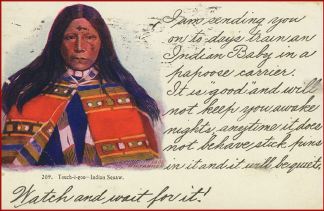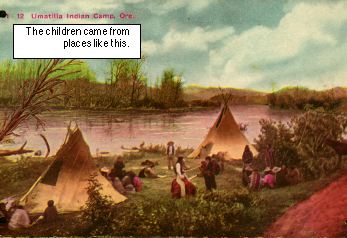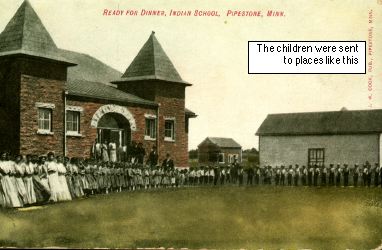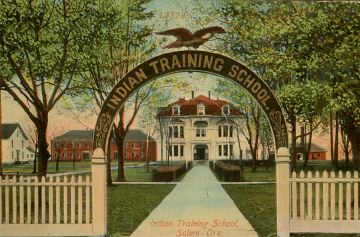Making Things Better by Working TogetherThe average American
has never had a fair chance to know who Native American people are,
or what we are like. Non-Indians have been exposed to a tremendous
amount of stereotypes of Indian people that made them think poorly
of Native American men, women and children, without ever even meeting
us. Touch-i-goo - Indian Squaw. You
should know that to call a woman a “squaw” is a very insulting
thing to do, but most Americans don’t know that. “Touch-i-goo”
is a made up name that doesn’t mean anything; but probably anybody
who saw this card would learn two incorrect things about Native American
people and language. That’s one way that pieces of stereotype
information can spread ignorance and bad feelings. |
 |
| “I
am sending you on to-day’s train an Indian Baby in a papoose carrier.
It is “good” and will not keep you awake nights anytime it
does not behave stick pins in it and it will be quiet. Watch and wait for it!” |
Perhaps
the writer of that message is “just kidding”. But it is
a fact that Indian children were treated very badly by other Americans;
and that many Americans believed that it was perfectly okay to mistreat
Indian children, because they were Indian. |
Boarding School BluesOne
of the saddest chapters in the history of social interaction between
Indians and non-Indians has to do with school. |
 |
| The poor kids were sent hundreds of miles from their homes to residential boarding schools, and some of them never saw their families again. Their clothes were thrown away, their hair was cut off, their languages were forbidden, and they were not allowed to pray in their Indian ways. They wore uniforms, and were supposed to learn trades that would enable them to work at low level jobs in the non-Indian world. |
 |
| Many, many of these children died at the schools. Others came back to their families years later, but hardly knew anybody any more, had forgotten their language, and no longer had any survival skills like hunting, fishing, tanning hides, making shelters, or putting up foods for the harsh winter. Many grew up to be sad adults trying hopelessly to raise their own children. Because they had never known any parents, they didn’t know how to “parent” their own children, who in turn did not have parenting experience. Many people feel that in breaking the connection between the generations, the era of the boarding schools did more harm than good to Native American people - some of whom are only now beginning to recover stability. |
 |
In Canada, the
last of the boarding schools was closed in the 1980s. The reason they
were closed was because for many years, Indian
people worked with non-Indian people to raise public awareness of
how terrible the schools were for children, and how they did no good
for anyone at all except the people who got paid by the governments
for working there. |
Here are the words
to a song written by Floyd Red Crow Westerman. Floyd was in the movie “Dances with Wolves”. He played the part of Chief Ten Bears,
the elderly diplomat chief who was always listening to everyone’s
opinion, to be sure that everyone in the tipi had a chance to express
an opinion as they tried to make decisions together in council.
| Main Menu | Curriculum & Supplements | Cradleboard Private Area | Store | ©2002 Nihewan Foundation
|
